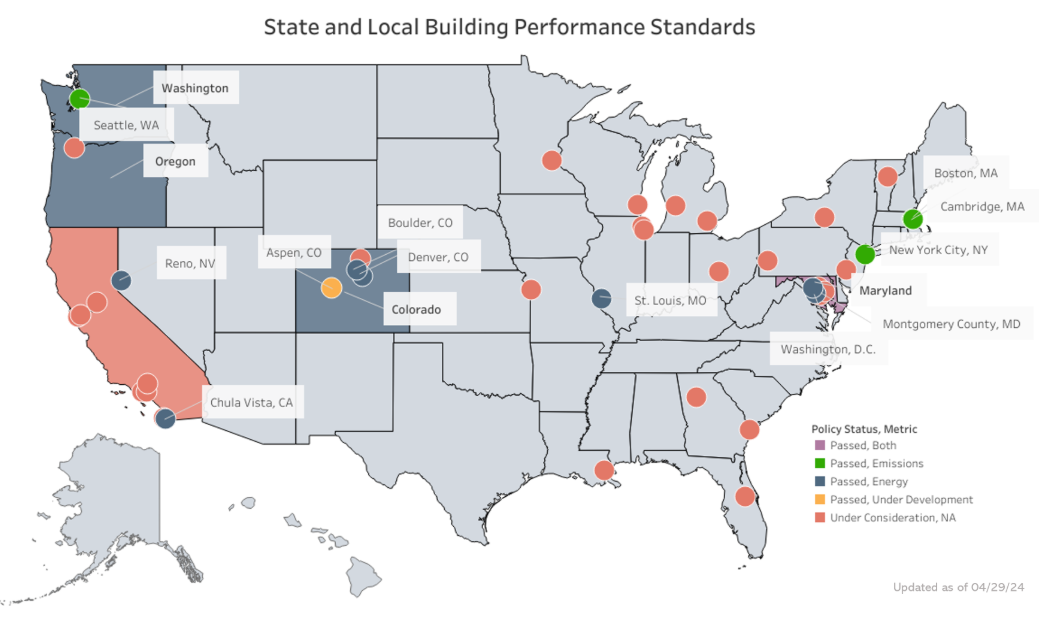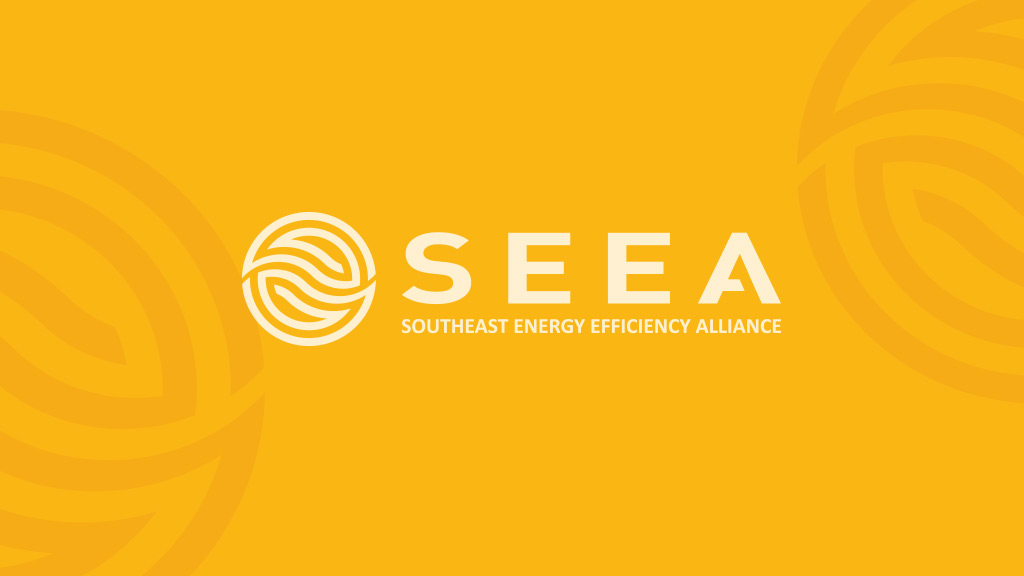Category: Uncategorized
Bringing Direct Pay Home: Helping Georgia Communities Explore Clean Energy Funding Opportunities
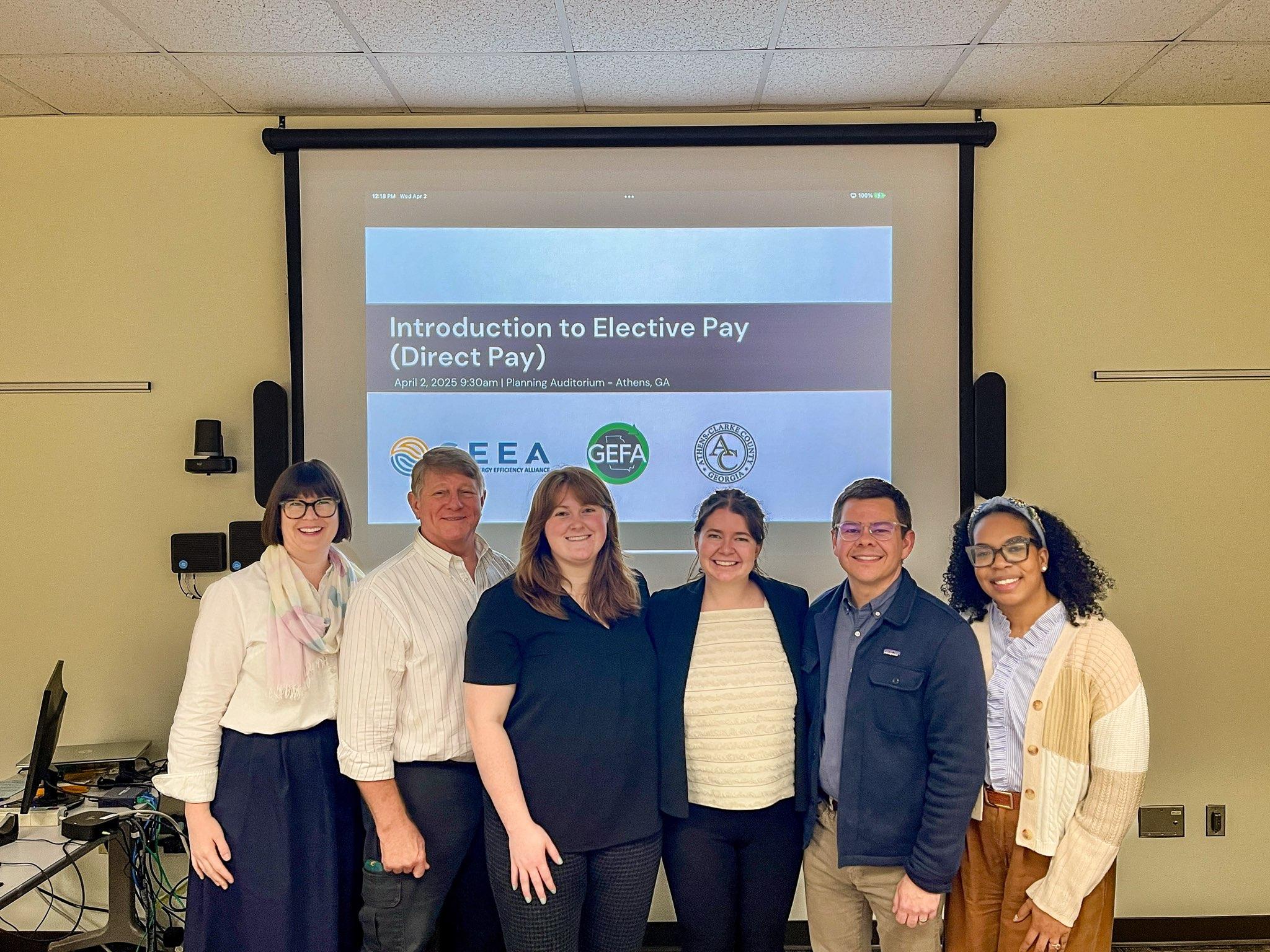
By: Ashley McBride, Esq. and William D. Bryan, Ph.D.
Last week, SEEA hit the road with Georgia Environmental Finance Authority (GEFA) and CYR Strategies for a three-stop Direct Pay Roundtable Tour, connecting with local governments, nonprofits, and community leaders to explore one of the Inflation Reduction Act’s most powerful tools: Direct Pay.
We started in Savannah, where coastal communities—facing both energy burdens and climate risks—are eager to invest in clean energy, but need trusted guidance to navigate IRS requirements and project eligibility. Participants emphasized the need for clear pathways to compliance and trusted partners to support implementation. “This was a really well put on event. It was a great balance between a formal presentation and a casual conversation. It allowed everyone to ‘participate’ with questions and really engage,” said Joshua Corning, Clean Energy Program Manager, with the City of Savannah Office of Sustainability. In Athens-Clarke County, the roundtable highlighted the demand for ongoing convenings, a space for local governments, nonprofits, and houses of worship to come together, identify potential projects, and work collaboratively through the Direct Pay process. There was strong interest in using Direct Pay strategically to stretch existing grant dollars, especially in under-resourced areas. Participants were enthusiastic about continued engagement and regional collaboration, with SEEA playing a key convening role.
We wrapped up in Decatur, where the conversation focused on practicality and replicability. Many leaders expressed a desire for template projects—pre-vetted models with clear steps for implementation and Direct Pay eligibility. Cassie Rowlands, Founder & Principal at CYR Strategies, helped provide concrete examples and success stories in her introductory presentation on Direct Pay. One attendee noted “It was incredibly helpful to see examples of projects that have successfully completed the direct pay process along with a recommended timeline. This was the first time I have seen those concretely shared.”
Across all three cities, the message was clear: communities are motivated and ready, but they need support—from capacity building and technical guidance to sharing lessons learned. Rowlands said “Direct pay is such a game changer for these entities, making clean energy more achievable than ever. We need to make sure as many entities as possible are aware of – and taking advantage – of this mechanism and not leaving money on the table.”
Our partnership with GEFA was essential to the success of these roundtables. Their presence helped connect participants to state-level programs and funding opportunities, and their outreach ensured that trusted local voices were in the room.
SEEA remains committed to continuing this work, convening stakeholders, and breaking down barriers to federal funding across the Southeast. Direct Pay is not just a financial mechanism, it’s a catalyst for local resilience, and community-led solutions.
Let’s build on this momentum together.
Buildings Blueprint (4th Quarter)
By Olivia Begalla & Elizabeth Willis
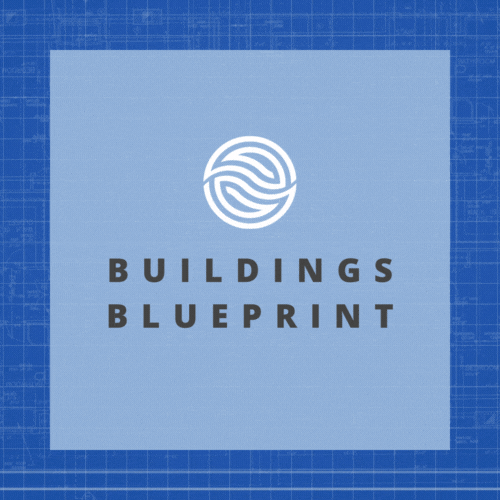
Buildings Blueprint October – December 2024
What SEEA Staff is Reading
—
Energy for All Y’all shares powerful stories of communities driving energy equity in the Southeast. Discover how they’re shaping a more inclusive energy future here.
An article by the New York Times highlights a growing issue: as natural disasters grow more frequent and unpredictable, insurance companies are increasingly refusing to renew policies in high-risk areas. In the Southeast, this challenge is especially significant, with communities facing heightened vulnerability to hurricanes, flooding, and other extreme weather events. This trend leaves homeowners vulnerable and exposes significant gaps in traditional insurance coverage.
The U.S. Department of Energy (DOE) has determined that the 2024 update to the International Energy Conservation Code (IECC) will improve energy efficiency in residential buildings. According to a technical analysis by the Pacific Northwest National Laboratory (PNNL), homes built to meet the 2024 IECC are expected to achieve 7.80% savings in on-site energy use, 6.80% savings in overall energy use, and 6.60% savings in energy costs across the country. This determination aligns with the requirements of the Energy Conservation and Production Act (ECPA). For supporting technical analysis, previous model energy code determinations, and commercial building energy code analyses, find more here.
—
Resources
—
Insulation is vital for energy efficiency, comfort, and reducing costs. Curious about how insulation works, its benefits, and how it can save you money? Read our latest blog to learn more about building insulation and how it impacts your home’s performance.
SEEA staff has recently published a blog on the role of Building Performance Standards (BPS) in addressing energy efficiency and decarbonization in the built environment, with a focus on their potential impact in the Southeast. This blog will cover what Building Performance Standards (BPS) are, how they differ from traditional building codes, why they are an effective strategy for meeting energy efficiency goals, and the unique challenges of implementing them in the Southeast. Click here to read the blog and learn how BPS can transform our buildings into resilient, energy-efficient assets.
—
SEEA member, Building Efficiency Resources (BER) is offering FREE training on RESNET’s National Standards for Sampled Ratings (Addendum 46), which will take effect on July 1, 2025. At that time, all Sampled Ratings projects must follow the updated procedures in MINHERS Chapter 6. With the current voluntary compliance period, this is a great opportunity to get a head start.
The training includes interactive modules and practical exercises to help you build the skills needed for success. It’s designed to support both seasoned professionals looking to stay up-to-date and newcomers eager to learn the ropes.
The U.S. Department of Energy (DOE) is partnering with Google to help homeowners find Energy Skilled™ professionals through Google Search and Maps. This DOE designation highlights contractors with the expertise to perform high-quality energy upgrades, like home audits and heat pump installations. The initiative makes it easier for people to save money, improve home comfort, and access Inflation Reduction Act tax credits. It also supports workforce development by encouraging states to use the Energy Skilled certifications to guide funding and create approved contractor lists.
The Association of Energy Services Professionals (AESP) is seeking skilled energy experts to join its institute as trainers. If you excel at engaging learners, delivering effective training, and promoting courses, apply by January 31st, 2025, at 5 PM PT.
The U.S. Department of Energy has introduced new tools to help contractors easily access tax credits for energy-efficient home appliances. These tools streamline the qualification process for incentives under the Inflation Reduction Act, enabling contractors to assist homeowners with energy-efficient upgrades. Over 2.3 million families have already claimed this credit, saving more than $2 billion in total. Learn more about these resources here.
—
Regional News
We’re excited to highlight the Buildings UP Phase 2 winners from the Southeast and U.S. Islands region, who are leading the way in energy efficiency and sustainability. We want to congratulate Shifted Energy Inc. from Honolulu, HI, which is advancing whole-home efficiency and energy resilience in native and frontline communities. Shifted Energy will receive a $400,000 cash award and technical assistance to continue their impactful work.
Winners are eligible to advance to Phase 3, where they may receive up to $400,000 in cash prizes and technical assistance to scale energy efficiency building upgrades. Eight additional Southeast teams are competing for Phase 3, with final submissions due in July of 2025 and awardees announced soon after. ——————————————————————————————————————————
The Community Lighthouse project, a partnership between Louisiana and local organizations, was successfully tested for the first time during Hurricane Francine, marking a significant achievement. The initiative, which installs solar panels on churches and community buildings, transforms these spaces into off-grid refuge centers after storms. Outfitted with charging stations, food, water, and deployable batteries from the Footprint Project, the Lighthouses provided essential support in the immediate aftermath of the hurricane. All ten Lighthouses were activated, proving the effectiveness of this solar-powered network in delivering relief during extreme weather events. This successful deployment has received national and local media attention and highlights the importance of building resilient electricity hubs to support communities in disaster-prone areas like Louisiana.
——————————————————————————————————————————
Georgia’s Home Energy Rebates offer incentives for households to purchase and install electric appliances, insulation, air sealing, HVAC systems, and other energy-saving home improvements. Eligible households can receive up to $16,000 in savings based on income and/or expected energy savings. Through the Home Efficiency Rebates (HER) and Home Electrification and Appliance Rebates (HEAR), Georgians can access rebates for whole-home energy retrofits or appliance upgrades, with rebate amounts determined by energy savings and household income. Click here to learn more about how you can save on energy-efficient home upgrades and improve your home’s comfort!
SEEA is hiring for our Buildings team!
Reducing greenhouse gas emissions in buildings, or building decarbonization, is an essential strategy for achieving emission reduction goals, managing housing and utility costs, and creating healthy facilities with improved indoor air quality. The Southeast Energy Efficiency Alliance (SEEA) seeks qualified candidates to change the status quo of building energy efficiency in the Southeast by planning and implementing clean energy programs and projects. These positions will cultivate expertise and resources, engage with stakeholders to understand their distinct needs and perspectives, and support processes and special projects to leverage available resources for SEEA initiatives
Buildings Program – Senior Manager
The manager / senior manager is responsible for the management, supervision, and continued development of SEEA’s portfolio of projects and programs. The position collaboratively guides individuals and teams to achieve program outcomes, engages with external stakeholders to understand their needs and provide insight on policy decisions, and leads the development and funding of new initiatives. This position will provide subject matter expertise across the organization and ensure that project goals align with SEEA’s mission and goals.
Reporting to the Director of Technology and Market Solutions, the manager / senior manager will support initiatives including, but not limited to, building energy codes, building energy efficiency programs, and workforce development efforts while contributing to SEEA’s cross-functional work. This position will build partnerships with state and local governments, nonprofits, academia, businesses, and utilities to support SEEA’s work across 12 states and five U.S. territories.
Buildings Program – Associate
This program associate will report to the built environment senior program manager to support initiatives including, but not limited to, building energy codes, building energy efficiency programs, and workforce development efforts while contributing to SEEA’s cross-functional work. This program associate will build partnerships with state and local governments, nonprofits, academia, businesses, and utilities to support SEEA’s work across 12 states and five U.S. territories.
Join us in making a lasting impact—learn more and apply today!
——————————————————————————————————————————
Building Performance Standards (BPS): Driving Energy Efficiency and Decarbonization in Existing Buildings
By Elizabeth Willis
Buildings account for nearly 40% of the energy consumed annually in the United States, making them not only one of the largest contributors to greenhouse gas emissions but also one of the most promising sectors for meaningful improvement. Even small gains in building efficiency can have an outsized impact, driving significant emissions reductions and positioning buildings as a critical focal point for climate action.
As cities and states across the U.S. begin implementing ambitious climate plans, Building Performance Standards (BPS) are emerging as a powerful and effective policy tool. By focusing on improving the energy efficiency of existing buildings, BPS policies fill a gap that traditional building codes—primarily aimed at new construction—fail to address. This is especially critical because most of the buildings that will be in use by 2050 have already been built. Achieving meaningful emissions reductions requires modernizing the aging building stock to meet higher energy performance standards. Building Performance Standards (BPS) help accomplish this by driving energy efficiency improvements, lowering operational costs, and reducing greenhouse gas emissions while delivering broader benefits such as improved air quality, job creation, and community health.
In this post, we’ll delve into the fundamentals of Building Performance Standards, their importance in advancing climate goals, the challenges of implementing them, and why they hold particular promise for the Southeast, where unique hurdles intersect with urgent needs for equity-driven energy policy.
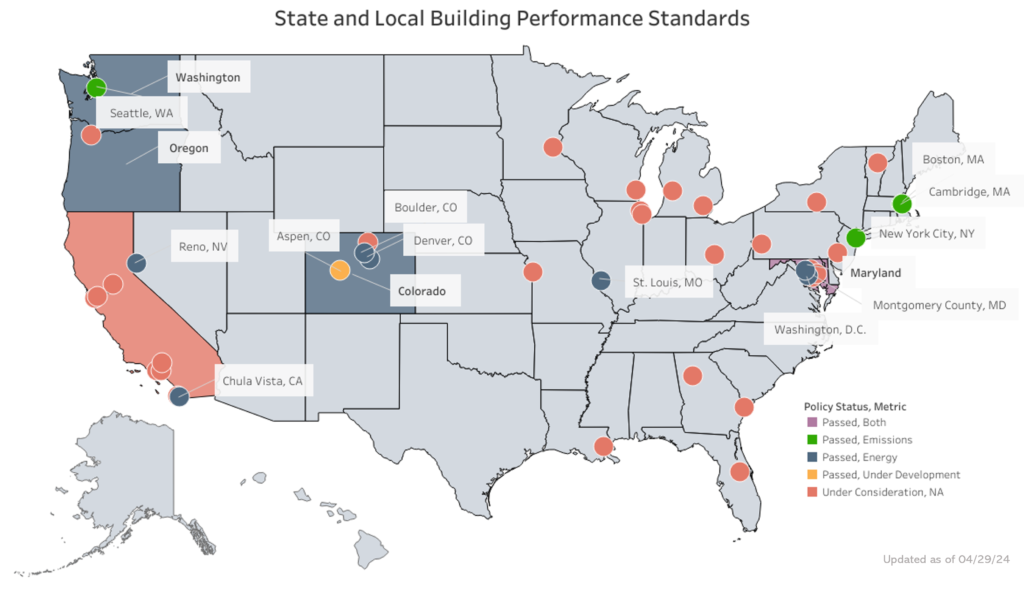
Map by U.S. Department of Energy
What Are Building Performance Standards (BPS)?
Building Performance Standards (BPS) are policies that require existing buildings to meet specific energy or emissions performance targets. These policies are typically adopted by municipalities or states seeking to cut energy consumption, reduce carbon emissions, and improve public health. BPS policies typically focus on large commercial and multifamily buildings, requiring owners to meet measurable benchmarks that get more stringent over time, mandating continuous improvement in the buildings’ performance.
Unlike traditional building codes, which focus on prescriptive requirements for new construction, BPS take an outcome-based approach. Property owners are granted the flexibility to choose the strategies that work best for their buildings, whether it’s retrofitting HVAC systems, improving insulation, installing renewable energy systems, or upgrading windows. What matters is the result: improved energy performance that aligns with the jurisdiction’s climate and energy goals.
The brilliance of BPS lies in its focus on existing buildings—a critical yet often overlooked segment of the built environment. While new buildings constructed under modern codes already achieve high efficiency levels, older structures usually lag behind. By requiring existing buildings to improve their performance, BPS ensures that the entire building stock contributes to long-term energy savings and carbon reductions.
The Benefits of BPS
Building Performance Standards (BPS) offer a spectrum of benefits that extend beyond energy efficiency. They drive substantial energy savings, lower greenhouse gas emissions, and enhance the functionality of existing buildings. By modernizing aging infrastructure, BPS boost property values, stimulate local construction jobs, and improve indoor living conditions, promoting better air quality, comfort, and productivity for occupants. Communities benefit from cleaner outdoor air, improved public health, and measurable progress toward climate goals. Furthermore, these standards provide state and local governments with actionable insights, increase market transparency, and strengthen tenant satisfaction by fostering sustainable and efficient building operations.
Why Building Performance Standards Are Essential
Buildings are at the center of the climate challenge—and the solution. Accounting for nearly 40% of energy consumption in the U.S., buildings are one of the largest contributors to greenhouse gas emissions. Yet, they also represent a massive opportunity for progress.
Most of the buildings we rely on today will still be in use decades from now. Focusing exclusively on making new buildings energy-efficient isn’t enough to meet our climate goals. Instead, we need policies that drive retrofitting and modernization in existing structures, where the potential for energy savings is most significant.
This is where BPS policies shine. By setting clear, measurable performance standards, they provide a structured pathway for building owners to upgrade their properties over time. Jurisdictions with ambitious climate action plans—such as Washington, D.C., and New York City—are leveraging BPS to reduce emissions and energy use across their building stock, demonstrating the potential for other cities and states to follow suit.
Challenges to Implementing BPS in the Southeast
The Southeastern United States faces unique challenges that make implementing BPS both more complicated and more necessary. This region, characterized by high energy consumption, aging infrastructure, and inequities in energy access, provides a vivid case for why BPS policies are needed—and what makes them challenging to implement.
One of the primary challenges to building innovation in the Southeast is the regulatory environment . States like Tennessee and Kentucky prohibit local jurisdictions from adopting building policies that go beyond state-mandated codes. This creates a roadblock for cities like Nashville and Louisville, which have expressed interest in BPS but are unable to move forward under current laws.
Another significant hurdle is the prevalence of historic buildings in the region. While these structures are culturally and architecturally valuable, they are often expensive and difficult to retrofit for energy efficiency. Preservation restrictions can further complicate efforts to modernize these buildings, limiting the types of upgrades that can be made.
Perhaps the most pressing—and often overlooked—challenge in the Southeast is the region’s high energy burden and widespread energy insecurity. The Southeast has the highest proportion of households in the U.S. that spend an unsustainable percentage of their income on energy costs. This problem disproportionately affects low-income families and communities of color, many of whom struggle to afford consistent and reliable energy.
Energy insecurity forces families to choose between paying their utility bills and meeting other basic needs like food, medicine, or rent. By reducing energy consumption and lowering energy bills, BPS policies have the potential to alleviate this burden, creating a more equitable energy future. However, historic disinvestment in underserved communities complicates this process. Many property owners in these neighborhoods lack access to the capital needed for retrofits, perpetuating a cycle of inefficiency and inequity.
Despite these challenges, the Southeast represents an immense opportunity for BPS to make a meaningful impact—especially when policies prioritize equity and target resources to areas that need them most.
Establishing Benchmarking as a First Step
Implementing a full-scale BPS policy begins with benchmarking. A benchmarking policy requires building owners to measure and report their energy use, creating a comprehensive dataset that helps jurisdictions understand the energy performance of their building stock.
Benchmarking is a foundation for future BPS policies that sheds light on the energy performance of each building in a particular jurisdiction and provides a way to compare buildings. It also raises awareness among property owners, often spurring voluntary improvements before mandatory policies are enacted. For example, Atlanta’s voluntary benchmarking policy has provided valuable insights into energy consumption patterns, though the lack of required performance targets limits its potential to drive impactful upgrades.
Leading by Example with Public Buildings
Many jurisdictions begin their BPS journey with government buildings, using them as a proving ground for the policy. By mandating performance standards on public facilities, cities and states can demonstrate the feasibility of retrofitting projects, leading by example and highlighting the benefits of energy upgrades.
This “lead by example” approach generates momentum for broader public adoption and helps refine the policy before extending it to the private sector. Public buildings provide a controlled environment for testing strategies, making them ideal starting points for BPS implementation.
Conclusion: Building a Sustainable and Equitable Future
With its unique challenges, the Southeast represents both a significant hurdle and an unparalleled opportunity. By prioritizing energy equity and targeting resources to underserved communities, BPS policies can do more than just reduce emissions—they can improve quality of life, alleviate energy burdens, and foster long-overdue investments in historically disinvested neighborhoods.
As cities and states across the country work to meet ambitious climate goals, BPS offers a powerful tool to ensure that progress is inclusive, impactful, and far-reaching. Building Performance Standards are more than just an energy policy—they’re a pathway to a more sustainable, equitable, and resilient future.
Why We Should Insulate Homes
By: Olivia Begalla & Amy Lovell
Building insulation is a critical component of energy-efficient design, providing resistance to heat flow to enhance the overall comfort and efficiency of a home. Proper insulation helps maintain a stable indoor temperature, reducing the need for heating in the winter and cooling in the summer. This not only improves comfort but also significantly lowers energy bills and decreases environmental impact by reducing energy consumption.
There are two primary types of insulation installations: continuous insulation and cavity insulation. Continuous insulation spans across structures without interruptions and is commonly installed on the exterior of the home. In contrast, cavity insulation is located within wall cavities, fitting between framing members. Insulation materials include fiberglass, cellulose, foam, and natural fibers, each offering unique benefits. These may be applied in rigid sheets, rolled from batts, blown as loose material, or sprayed in an expanding foam. The U.S. Department of Energy offers a comprehensive guide to insulation materials, helping homeowners and builders choose the best options for their needs.
Heating and Cooling Homes
An important goal for a home is to maintain an indoor temperature that is safe and comfortable, and at the same time, affordable. There are different challenges to maintaining comfortable temperatures in winter and summer, but the principles are the same. Heat will flow from hot to cold, and the flow is faster when the temperature differences are the highest.
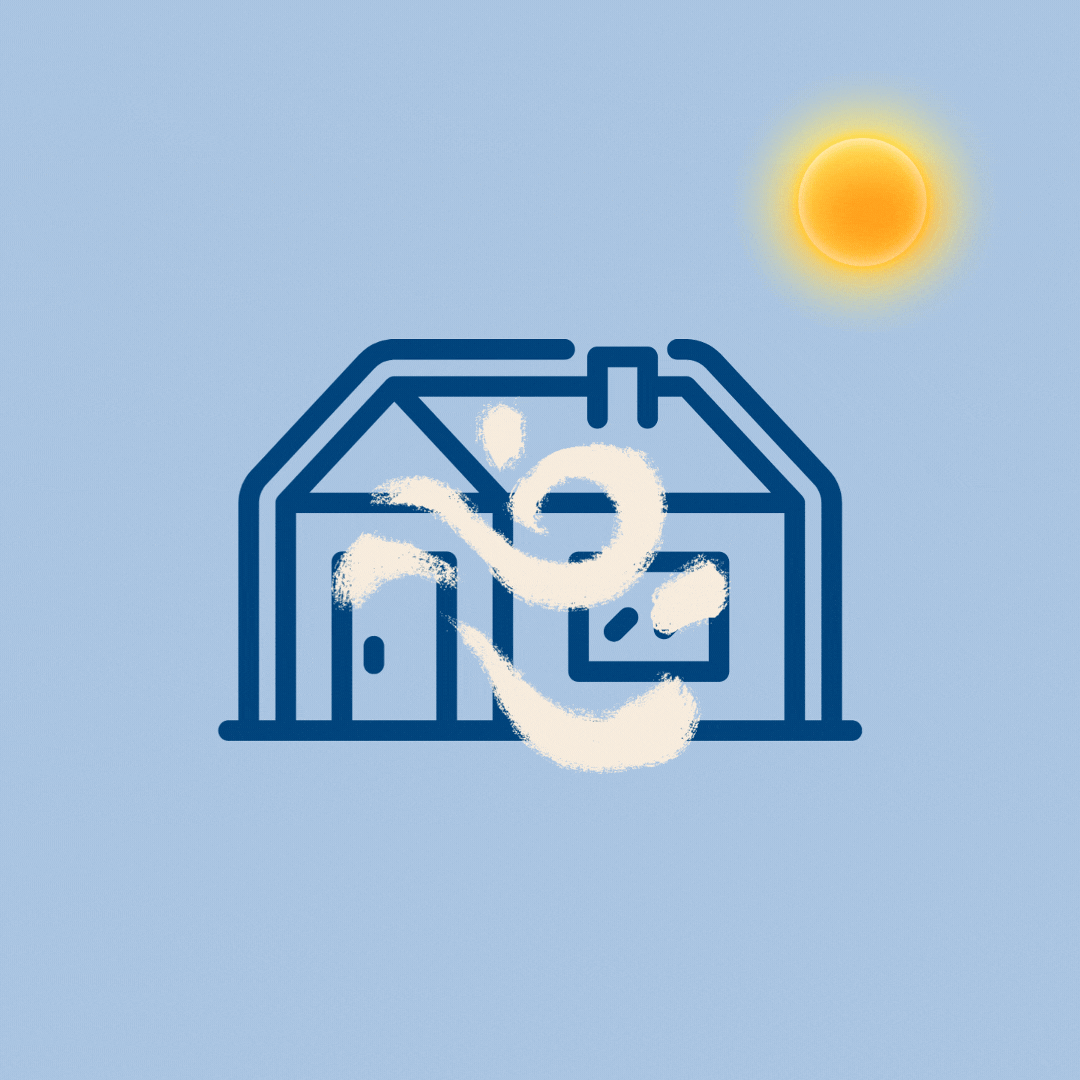
On a spring day when it is 64° F outside and the house is 68° F inside, there is only a 4° difference, and the heat flow is minimal.
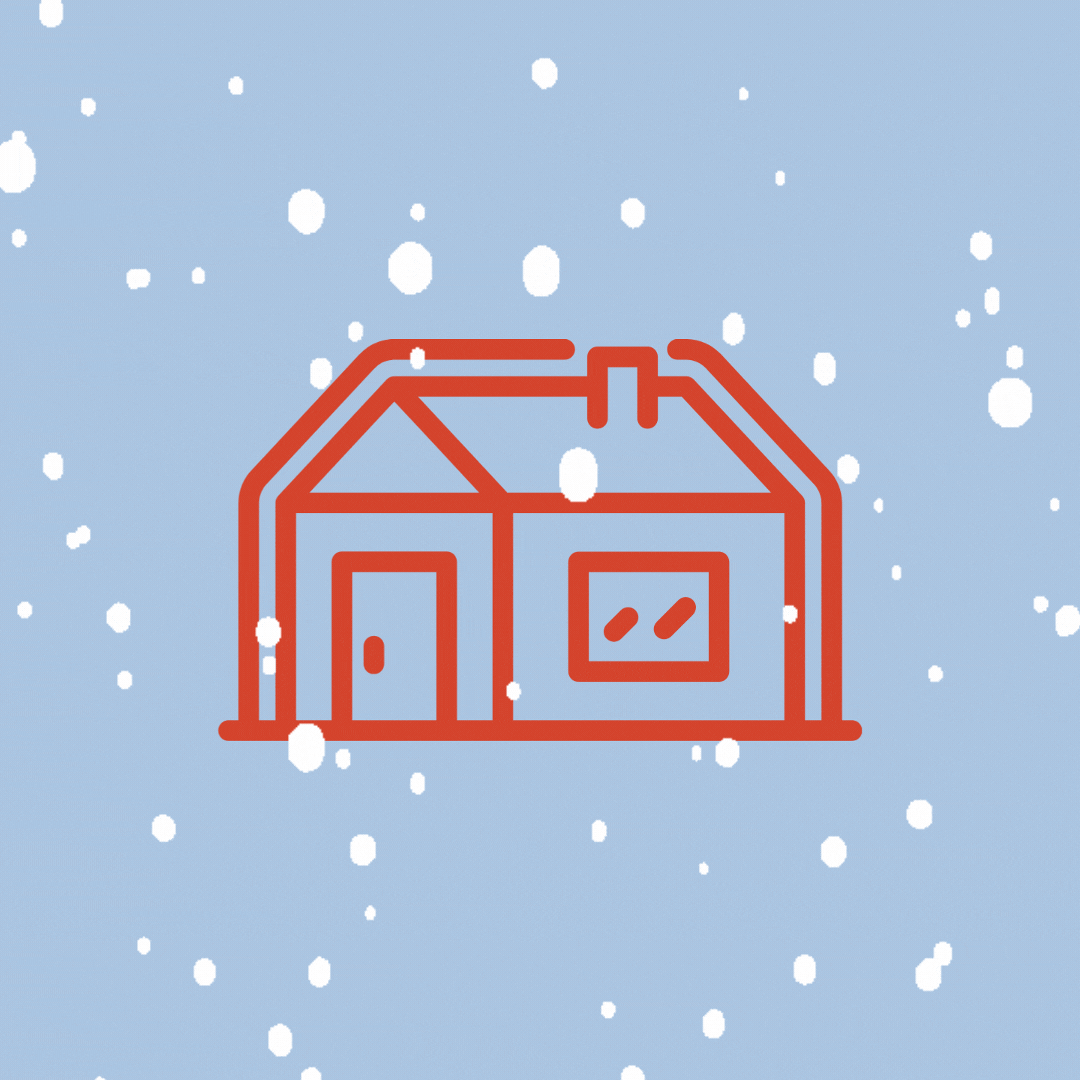
However, on a colder day when it is 35° F outside, the temperature difference increases to 33°. This larger difference causes the house to lose its heat at a more rapid rate, requiring greater energy input into the home to maintain the same indoor temperature.
Degree days are a measure of how cold (heating) or how hot (cooling) a location is relative to a standard indoor temperature. They allow us to compare one location to another and also to compare one year to another at the same location. Importantly, we must consider weather when we analyze impacts of energy efficiency upgrades, such as adding insulation so that we are not confusing our results with having, for example, an unusually warm winter.
In the Southeast, our intuition might tell us that our focus should be primarily on cooling, but the data tell a different story for much of our region. Figure 1 shows that heating degree days far outnumber cooling degree days in the Southeast*, because both the temperature differences are larger, and there are more days each year that require heating.
Figure 1: Heating and Cooling Degree Days in the Southeast*
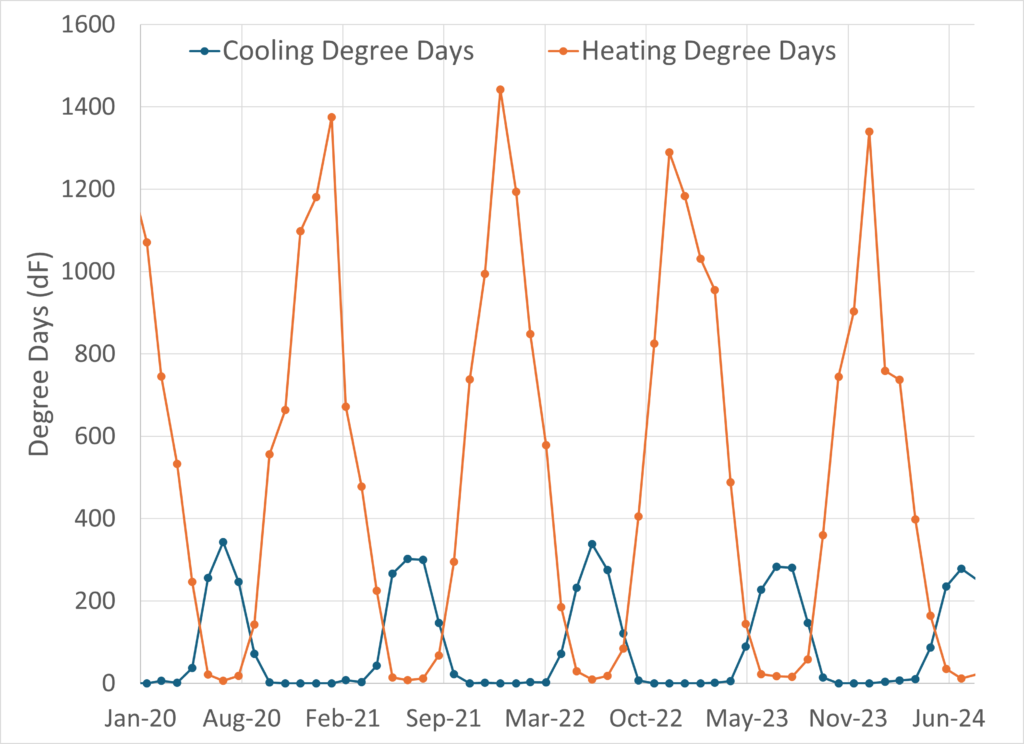
*Southeastern states include the Atlantic coast from Florida to Virginia, plus Alabama and Tennessee
Data Source: NOAA National Centers for Environmental Information,
Building Energy Codes and R-Values
The goal of insulation is to resist heat flow, and the ability to resist is measured in the R-value of the insulation that is installed. R-values are always measured for an assembly, so insulation installation quality is critical to performance. Higher R-values do a better job of slowing down the heat flow, leaving the home occupant more comfortable, and with a lower energy bill. Most insulation is some type of fluffy, low-density material that captures pockets of air and keeps those pockets of air from flowing easily to the spaces beyond. Sometimes, these are paired with a radiant barrier, which is usually a shiny material that reflects the heat back where it came from.
Building energy codes specify minimum R-values for insulation based on climate zones and for different parts of the home. Across the Southeast, many states currently enforce energy codes that fall below the most recent, 2021 International Energy Conservation Code (IECC). To explore current insulation requirements for each state, visit the Insulation Institute’s Codes and Standards Page.
However, homes in the Southeast can still be built to meet or exceed the 2021 IECC standards. These standards reflect modern advancements in technology, offering greater cost-effectiveness and resilience for today’s needs. The table below outlines the insulation requirements specified in the 2021 IECC for Southeast Climate Zones.
Table 1: IECC Insulation Requirements
| Climate Zone | Uninsulated Attic | 3-4 Inches of Existing Attic Insulation | Uninsulated Floor | Uninsulated Wood-Frame Wall | Insulated Wood Frame Wall |
| 1 | R30-R49 | R19-R38 | R13 | R13 or R0 + R10 CI* | N/A |
| 2 | R49-R60 | R38-R49 | R13 | R13 or R0 + R10 CI | N/A |
| 3 | R49-R60 | R38-R49 | R19 | R20 or R13 + R5 CI or R0 + R15 CI | Add R5 CI |
| 4 except Marine | R60 | R49 | R19 | R20 + R5 CI or R13 + R10 CI or R0 + R15 CI | Add R10 CI |
| 4 Marine and 5 | R60 | R49 | R30 | R20 + R5 CI or R13 + R10 CI or R0 + R15 CI | Add R10 CI |
Data Source: U.S. Department of Energy
Though summer heat can be intense, winter conditions have a stronger influence on the insulation recommendations, largely because of the higher heating degree days illustrated in Figure 1. Within the building, since most insulation materials are low in density, they require a lot of space to act effectively.
For most climate zones in the Southeast, attic insulation of up to R-60 and wall insulation up to R-20, or an equivalent in continuous insulation, is specified in the 2021 International Energy Conservation Code (IECC), as shown in Table 1. Continuous insulation can be installed at the time of construction or during renovations. A typical attic design permits the installation of many inches of thick insulation to protect the living spaces below from heat loss, while on the other hand, the wall thickness may limit how much cavity insulation can be installed. Walls constructed with 2×4 wood studs, for example, can have R-15 insulation in the wall cavities. The Insulation Institute estimates that compressing thicker insulation into thinner wall gaps reduces its effective R-value.
The ground has a higher density and heats and cools more slowly than the surrounding air, so basements and foundations that are below ground will need less insulation to protect the home from underneath. Raised homes or other types of floors with direct exposure to air flow require greater R-values, particularly in colder climate zones.
Insulation batting is manufactured in rolls, usually of glass fibers, with thickness according to the expected depth of the construction materials. Loose insulation of cellulose or fiberglass can be blown into attics to a depth that produces the desired R-value. Over time, the insulation may compress or be damaged by water or pests, which can reduce its effectiveness. In addition, recommendations are updated periodically as knowledge and technology improve, so many existing homes may need attention to the level of insulation. 2024 research sponsored by the North American Insulation Manufacturers Association (NAIMA) reveals that 89% of US single-family homes are under-insulated! Is yours one of them? ENERGY STAR offers helpful guidance on how to assess your insulation levels and understand the recommended R-values for retrofitting.
Retrofitting your home with proper insulation can significantly improve comfort and reduce costs. Table 2 below illustrates the estimated utility bill savings from sealing and insulating homes in different climate zones across the South, demonstrating how such upgrades can lead to meaningful reductions in heating and cooling energy use.
Table 2: Estimated Heating and Cooling Savings from Home Sealing and Insulating
| Climate Zone | Estimated Annual Utility Bill Savings (%) |
| 4 | 17% |
| 3 | 14% |
| 2 | 9% |
| 1 | 7% |

Figure 2: SEEA Research Associate Amy Lovell captured this thermal infrared photo in her home, where she discovered a panel of insulation had fallen down into a kneewall attic. Where the panel was missing, more heat could transfer between indoors and outdoors, with a visible thermal effect.

Figure 3: This thermal infrared photo illustrates that the insulation captured in the wall was likely damaged when the roof leaked in the past. Compared to adjacent sections of the wall, the insulation is still working somewhat, but not as effectively as in areas that were not degraded. The windows in this photo also appear in blue and purple colors, indicating they are also colder due to increased heat loss across the glass.
Nonprofits for unincorporated Norcross acquire $19.95 million EPA Community Change Grant
FOR IMMEDIATE RELEASE
DECEMBER 12, 2024
*Repost from Lucky Shoals Community Association*
The Lucky Shoals Community Association (LSCA) – with partners Gwinnett Housing Corporation (GHC), Georgia Hispanic Construction Association (GHCA), and Southeast Energy Efficiency Alliance (SEEA) – have acquired a $19.95 million Community Change Grant from the U.S. Environmental Protection Agency.
LSCA and partners will utilize the funding in unincorporated Norcross for greenspace preservation, development of a community resilience hub, and expansion of its existing programs around energy efficient buildings, indoor air quality, water, and the clean energy construction workforce. Unincorporated Norcross is both the most diverse and most under resourced part of Gwinnett County, itself the second largest county in Georgia.
LSCA and its three partners have previously worked on a variety of initiatives, particularly through its Drawdown Georgia grant, which helped to establish their programs around healthy, energy efficient buildings and construction workforce training, and to engage all nearly 22,000 households in this area on their needs around housing, energy, and jobs.
Marvin Lim, LSCA, CEO and Founder: “Together with GHC, GHCA, and SEEA, LSCA’s work has always been centered around promoting our community’s strengths to address the very energy, environmental, and economic challenges we live and work in, every day. In this county, we’ve got the highest housing and energy cost burdens, some of the most dilapidated properties and unhealthiest conditions, and an underappreciated economy. But we also have stunning cultural and linguistic richness, a robust construction workforce, and greenspace we should preserve. I’m grateful to the EPA for believing in our strengths, our potential, and the idea of community ownership over our own assets.”
Lejla Prljaca, GHC, Executive Director: “Over the past decade, the housing market has become increasingly corporatized, with Gwinnett County leading the state in the number of institutionally-owned homes. This grant will empower our community to reclaim control over its land, fostering sustainable resource management, promoting economic development, addressing housing affordability, and preserving cultural heritage. By curbing land speculation and ensuring long-term access to vital land assets, this initiative will ensure equitable opportunities and a resilient future.”
Rafael Villegas, GHCA, Director of Organizational Growth: “This project is a shining example of what can be achieved when community, industry, and government come together to drive positive change. As a partner in this effort, GHCA is proud to contribute to the growth and development of a more sustainable, resilient, and equitable community. We believe that everyone deserves access to safe, healthy, and affordable housing, and we’re committed to helping make that vision a reality.”
William D. Bryan, Ph.D., SEEA, Director of Research: “From the beginning, this project has used collaborative research and on-the-ground engagement to identify and address key needs faced by residents of unincorporated Norcross. This work affirms that place-based solutions, rooted in local assets, are crucial for addressing energy insecurity. This grant will not only be transformational for unincorporated Norcross but will also provide valuable insights into how we can scale up successful place-based models across the South, particularly in communities facing energy insecurity.”
Aimee Skrzekut, SEEA, President and CEO: “Our research has illuminated both the challenges and untapped opportunities within unincorporated Norcross. This grant enables us to amplify our data-driven approach, empowering the community to leverage its unique strengths and tackle affordability issues to enhance energy security. At SEEA, we are proud to collaborate with our partners to create transformative change in Norcross, and we are committed to expanding this replicable model to make a lasting impact in other underserved communities across the Southeast.”
CONTACT: [email protected]
2024 Southeast Energy Summit Member Testimonial
Written by: Julie Hayes
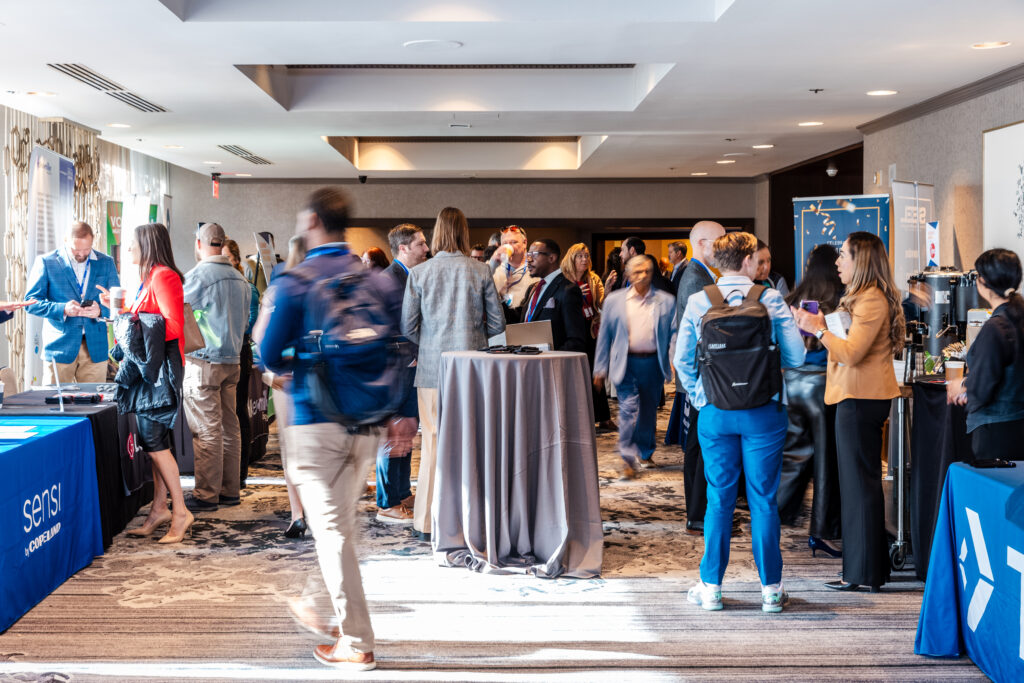
Southeast Energy Summit 2024 was bigger and better than ever, with over 300 attendees from across the country participating.
As a new SEEA member, I was excited to experience for myself all of the great things I had heard about the Summit from my colleagues in the region. I was also eager to see if anyone else was feeling uncertain about how the incoming administration might affect our industry.
My concerns were addressed in the first 30 minutes.
SEEA President, Aimee Skrzekut opened with a warm welcome and comprehensive overview on all the incredible work SEEA has been doing over the last 3+ years. Collaborating through community partnerships, SEEA’s core services of Research, Consulting and Education, Program Management, Facilitation and Financial Services have been instrumental in expanding the Southeast’s coalition for energy efficiency and supporting over $110M in funding across the region.
Then Gene Rodrigues, Assistant Secretary for Electricity at the US Department of Energy took the stage, where he applauded the strength of SEEA’s commitment to collaboration and then laid out a simple framework for how we talk about the work we do in energy efficiency and load management, regardless of the political landscape:
- Reliable – our power must always readily available
- Secure – our infrastructure must be protected from foreign and domestic threats
- Resilient – our systems must withstand increased demand, disasters and extreme weather events
- Affordable – our energy costs must be manageable for all Americans if we are to thrive as a society
He also assured us that DOE is working overtime to award federal grants for Inflation Reduction Act programs like Home Energy Rebates (HER) so that state energy offices can expand their efforts to meet the needs of their communities.
I was now ready to jump into a full day and a half of presentations, panels and interactive discussions centered around this year’s theme of People, Places and Things. The agenda and session descriptions are available at southeastenergysummit.com, but here’s a sample of some of the great conversations I am still thinking about.
The Intersection Between Health, Climate and Resiliency panel focused on strategies for reducing barriers to participation in weatherization programs. Jasmine Mah presented ACEEE’s weatherization readiness pilot, which addresses health and safety issues prior to weatherization work to reduce the number of deferred homes. Michaela Marincic from Three3 shared an Early Alert System that can detect extreme cold or heat in vulnerable homes, especially those of the elderly. And Jacqui Dadakis from Green Coast Enterprises presented on the importance of strengthening codes to combat vanishing insurance options in Louisiana.
SEOs: Where Are They Now was a lively, interactive conversation between attendees and state energy office representatives from Tennessee, Georgia, Alabama, Florida and Mississippi. Each state shared implementation strategies for federally funding programs such as Home Energy Rebates, Solar 4 ALL, and WETO. They also shared the latest EECBG projects and how community and stakeholder engagement is transforming clean energy initiatives in their states.
Harnessing Energy Efficiency: The Untapped Potential of Demand-Side Solutions in Electricity Management was another great discussion where utilities, implementors and policy experts in the region talked about how energy efficiency plays a pivotal role in reducing demand, enhancing grid reliability, and achieving sustainability goals, and which demand-side solutions are reshaping the traditional energy supply model.
The closing plenary with Mark Johnson (Thomas F. Hash Endowed Chair in Sustainable Development, Professor of Materials Science and Engineering) and Kenneth Shiver (Chief Economist, Southern Company) was a powerful reminder that we must strategically leverage energy efficiency to meet our collective goals for economic and community resilience.
Amongst all this learning and discussion, SEEA celebrated energy innovators at the third annual SE Summit Awards. 2024 award recipients are:
- Cobb EMC – Vanguard Award for Innovation in Efficient Energy
- Lucky Shoals Community Association, Gwinnett Housing Corporation, and GA Hispanic Construction Association – Luminary Award for Pursuing Energy Equity
- Drew Frye, Tennessee Valley Authority – Peak Award for Excellence in Leadership
Learn more about the award winners here: https://lnkd.in/eUUTSCyX
Lastly, but not leastly, this event was FUN!!! Resource Innovations sponsored Wednesday night’s festive Cocktails and Connections kickoff party, Southern Company sponsored Thursday night’s raucous Power Hour Karaoke and Line Dancing hoedown (yes, I said hoedown!) and then there were parties both nights hosted offsite by various organizations attending the Summit. I have to say, as a first timer, I really got so much out of attending.
Can’t wait for next year. 😊
To learn more about the Summit and SEEA, visit: seealliance.org. Let’s continue working together to shape a sustainable energy future for all. 🌍⚡#SEEA #EnergyEfficiency #SoutheastEnergySummit #Innovation #SustainableEnergy #EnergyEquity #Leadership #SEImpact
Southeast Energy Efficiency Alliance Announces 2024 Summit Award Winners
The Southeast Energy Efficiency Alliance (SEEA) announced the winners of the 3rd Annual Summit Awards today, Thursday, November 21, during the 2024 Southeast Energy Summit. The Summit Awards recognize individuals and organizations forging a more equitable, efficient energy future in the Southeast.
The award winners are as follows:
The Vanguard Award for Innovation in Efficient Energy – Cobb EMC
Cobb EMC’s nomination for the Vanguard Award highlights its groundbreaking microgrid project, completed in September 2022, which integrates innovative technologies like a 1.8 MW solar PV system, a 1 MW/4 MWh battery energy storage system, and a 1 MW renewable natural gas generator. This initiative supports Cobb EMC’s goal of reducing carbon emissions by 75% and expanding its renewable energy portfolio by 2030. The microgrid has produced over 9.3 million kWh of energy, equivalent to avoiding nearly 746,000 gallons of gasoline, while enhancing energy reliability for its members.
Additionally, the EV Smart Charging Pilot encourages off-peak EV charging to lower demand, and community solar projects are being developed to increase accessibility. These efforts not only improve sustainability but also inspire other electric cooperatives in Georgia to adopt similar clean energy initiatives. Cobb EMC’s leadership exemplifies how innovation can drive significant advancements in energy efficiency and equity across the Southeast.
About the Vanguard Award for Innovation in Efficient Energy
At its best, efficient energy is a holistic approach to the generation, distribution and utilization of energy that maximizes social benefit and promotes prosperity. Efficient energy includes programs to optimize energy use in residential and commercial buildings, zero- and low-emission transportation and advanced technology. Innovation in efficient energy is characterized by a new method, technology or idea that has resulted in a net-new advancement in efficient energy. This award recognizes an outstanding organization or program that has championed an innovative approach to efficient energy in the Southeast.
The Luminary Award for Pursuing Energy Equity – Lucky Shoals Community Association, Gwinnett Housing Corporation, and Georgia Hispanic Construction Association
The coalition’s nomination for the Luminary Award is a testament to its unwavering commitment to energy equity in unincorporated Norcross, Georgia. This area, characterized by its diverse and under-resourced population, faces significant energy cost burdens, with over 85% of residents identifying as BIPOC and nearly 25% living in poverty. The coalition, comprising Gwinnett Housing Corporation (GHC), GHCA, local representatives, and SEEA, has effectively harnessed funding and resources to directly address these inequities. Through extensive community engagement, including canvassing all 21,980 households and administering multilingual surveys, they prioritized the voices of residents in shaping energy solutions. Their initiatives have not only provided access to over 50 energy assistance programs and $3 million in HUD-funded repairs but also empowered local contractors through training and scholarships. This holistic approach—rooted in listening, learning, and community involvement—has fostered sustainable change and improved access to energy benefits for thousands in a historically marginalized community. Their work exemplifies the spirit of the Luminary Award by demonstrating that true energy equity is achieved through active community engagement and empowerment.
About the Luminary Award for Pursuing Energy Equity
Energy equity is measured by the presence of an inclusive decision-making process, the equitable distribution of both the costs and advantages of energy use to the entire community, accounting for historic prejudice and inequality and a view of how future generations will be impacted by choices made today. This award celebrates the accomplishments of an outstanding organization or program that has made significant strides in pursuing energy equity by sharing in the benefits and burdens of the energy transition regardless of income, race, ethnicity, gender or geographic location. Benefits of an equitable energy transition include greater access to efficient energy technologies, a more diverse workforce, healthier buildings and people, more resilient buildings and a more vibrant economy for all.
The Peak Award for Excellence in Leadership – Drew Frye, TVA
Drew Frye’s nomination for The Peak Award for Excellence in Leadership showcases his vital role in advancing energy efficiency and clean energy in the Southeast. As a key driver of TVA’s Fast Charge Network, he has established the Tennessee Valley’s largest open-access electric vehicle fast charging network, adding over 100 fast chargers and facilitating more than 25,000 charging sessions in just two years. This initiative enhances EV infrastructure, promotes economic growth, and improves air quality across seven southeast states.
Drew’s focus on equity ensures that fast chargers are accessible in both urban and underserved rural areas, empowering all residents to adopt electric vehicles. His commitment to education is evident in resources like the EV Buyer’s Guide and TVA’s Driving EVolution Blog Series, which helps individuals understand the benefits of electric transportation and clean energy technologies. Through his innovative leadership and collaborative spirit, Drew inspires others to engage in the clean energy sector, making him a deserving recipient of this award and exemplifying effective leadership that enhances quality of life in the Southeast.
About the Peak Award for Excellence in Leadership
Leadership is a multifaceted quality that creates a clarity of mission, an environment that encourages innovation at all levels of an organization, and empowers others within the organization and in the community. This award is given to an exceptional individual who demonstrates leadership in the efficient energy sector, considering greater energy efficiency, low- and zero-emission transportation, equitable energy benefits and burdens, and the advancement of the community at large.


